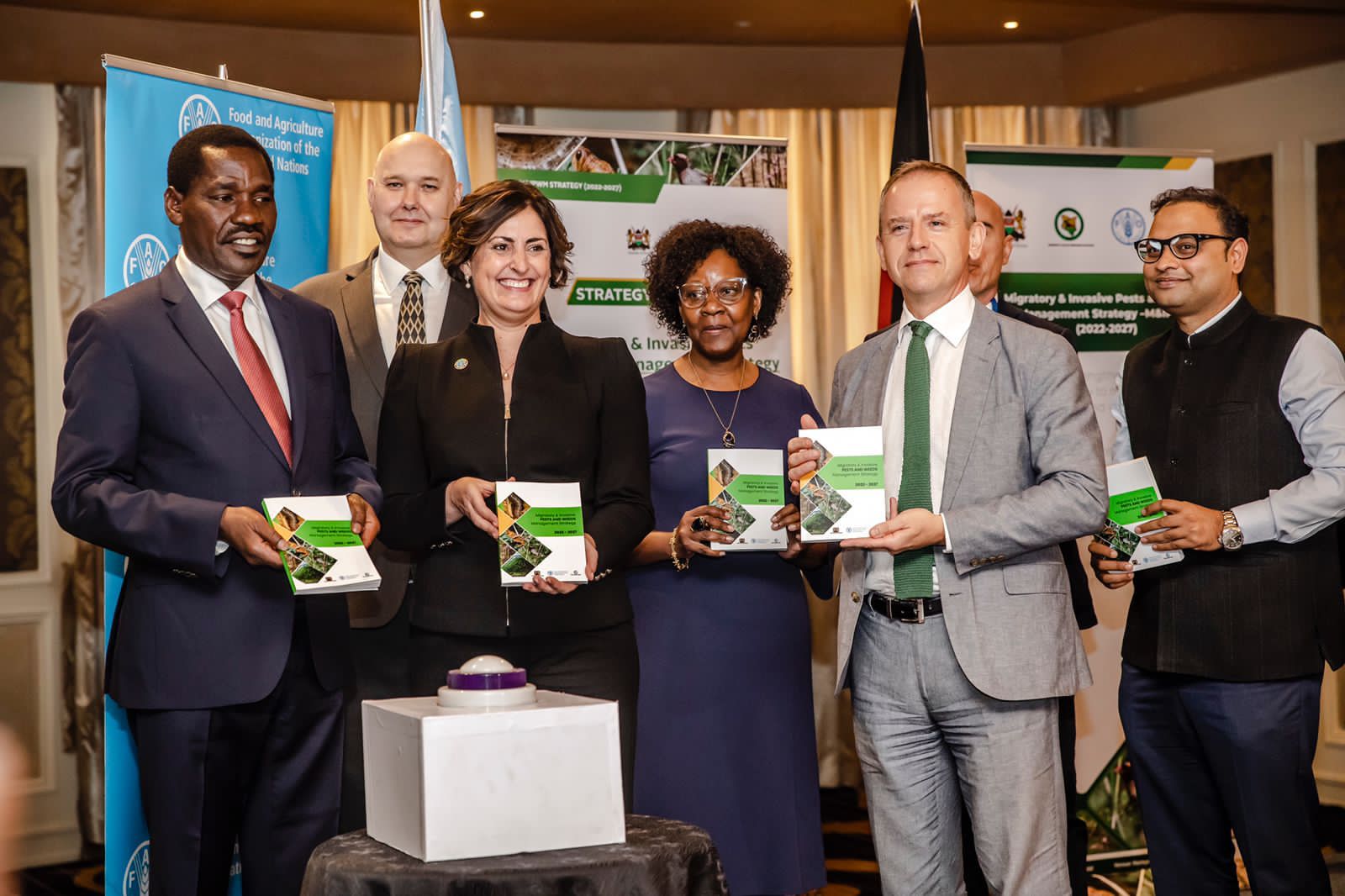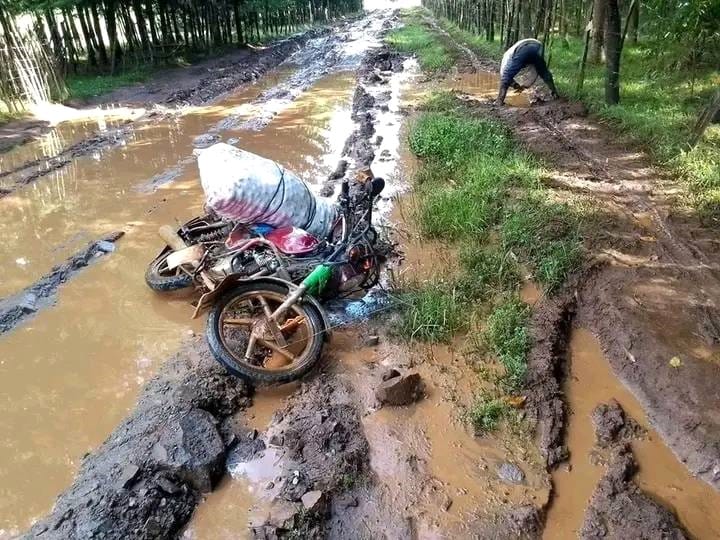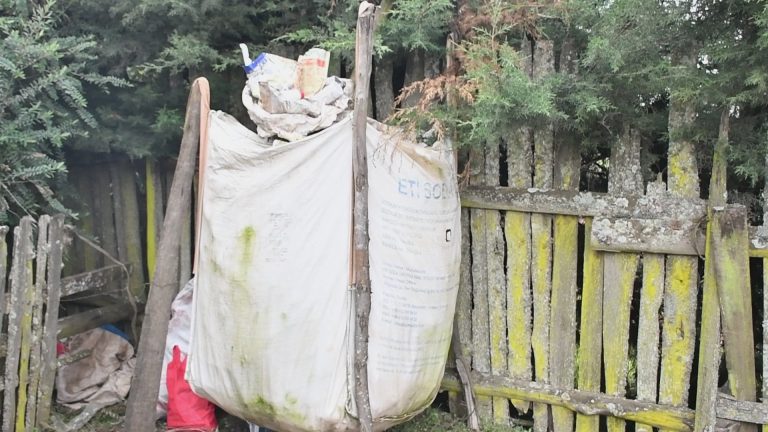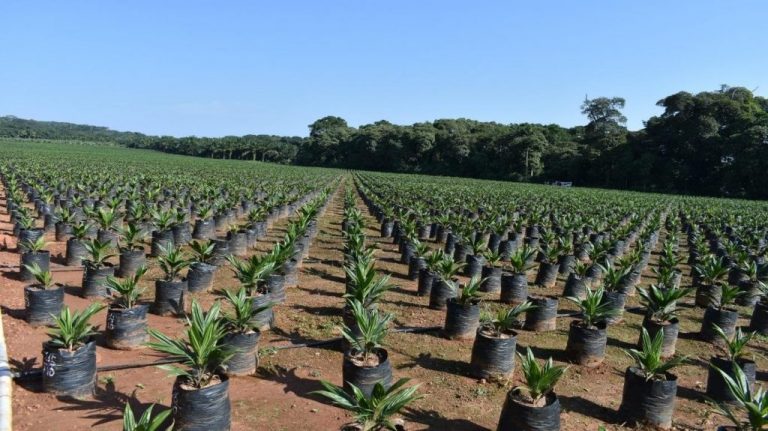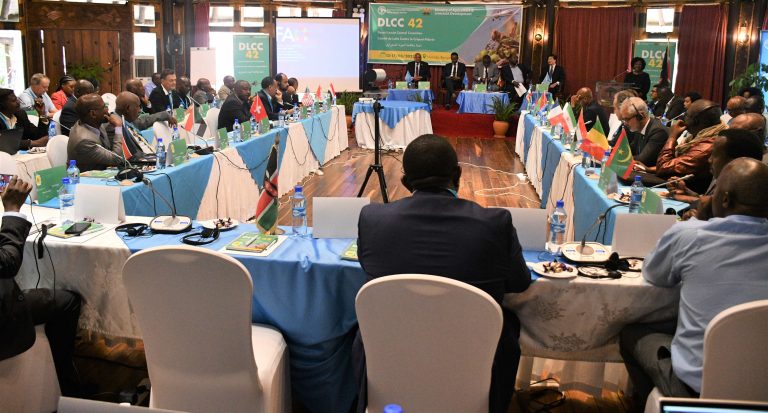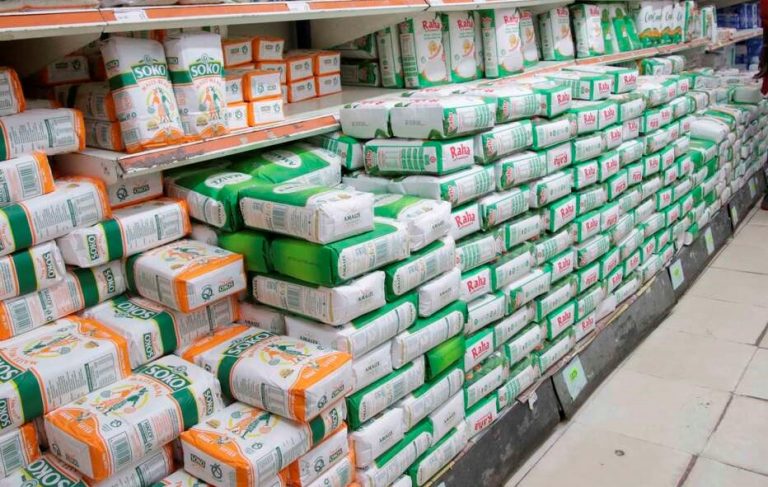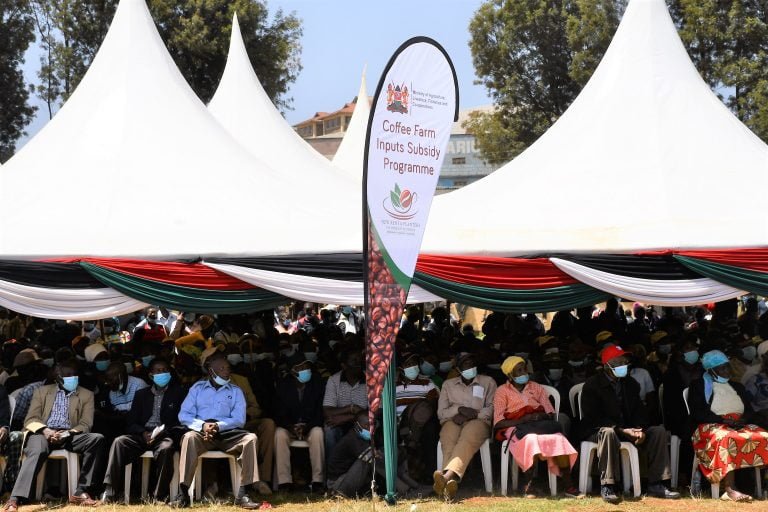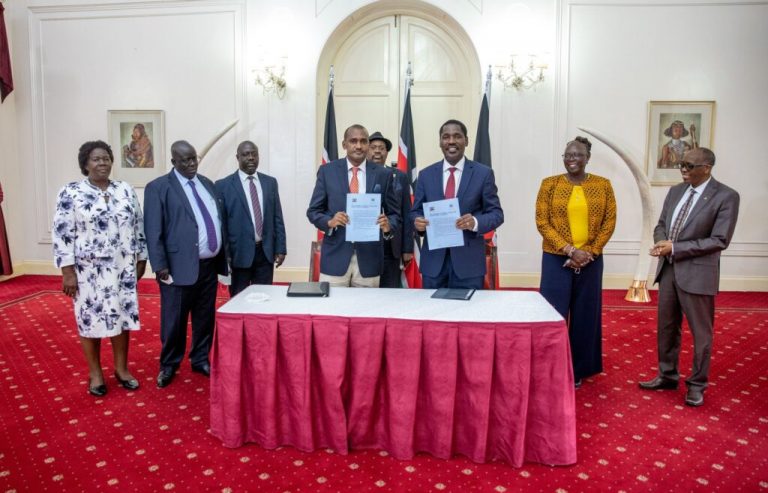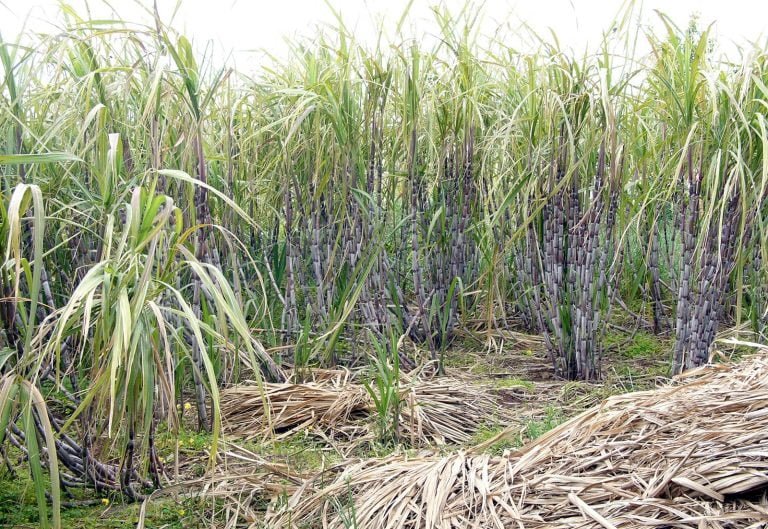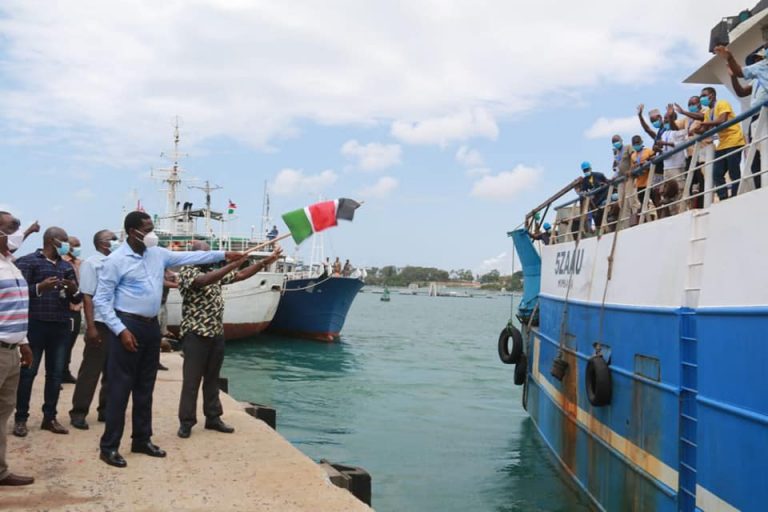Climate change has intensified the emergence of pests and diseases that have not been experienced over a long period. Migratory pests and invasive pests are posing a new challenge in the Eastern Africa region with devastating effects on the environment, national food security, and farmers’ livelihoods. Agriculture Cabinet Secretary Peter Munya gave this information during the Migratory and Invasive Pest Management Strategy launch in Nairobi.
Over the last two years, the Desert Locust (DL) invasion experienced in Kenya posed a severe food security threat to over 4 million people, affecting a total of 32 Counties in the Northern Eastern, Coastal, Central, Eastern and Rift Valley regions of Kenya. The Ministry collaborated with various stakeholders and managed to contain the invasion successfully. At the County level, many stakeholders came together to support the restoration of farmers’ livelihoods whose enterprises were damaged during the invasion. We appreciate the effort of all the national, regional, and international organizations and the donor community who continue to support government efforts in this area,” said Munya.
The CS said the lessons learnt from the desert locust invasion and the emergence of new invasive pests and weeds have also exposed gaps in institutional and coordination structures, human capacity and resources, communication, knowledge, and information systems.
“It is in this respect that this Ministry, with the support of FAO and World Bank, spearheaded the development of the Strategy for Management of Migratory and Invasive Pests. The strategy has been subjected to various stages of stakeholder consultations and public participation at the national and county level, with sixteen sessions being held in this respect,” added the CS.

The strategy has identified seven priority pillars for a comprehensive migratory pest management system and will provide a platform for a coordinated, collaborative approach. This strategy will establish a modern information and knowledge management system to strengthen surveillance forecasting and ensure timely and effective control operations.
A sustainable resource mobilization mechanism through partnerships and collaborations will also be operationalized. The Ministry will support the development of the relevant Institutional, Policy, and Regulatory Frameworks, prioritized in this strategy, including establishing a funding mechanism within the government that ensures resources are available for quick and effective response to any invasion.

“We call upon county governments to support policy initiatives in this direction. The Ministry will continue working closely with regional and global organizations, national and county stakeholders, and the donor community to support the implementation of this strategy. To this end, a multi-stakeholder migratory pest management platform will be established to provide a well-coordinated strategy steering framework. This will guide the formulation and operationalization of sustainable resource mobilization plans for the implementation of this strategy. The need to protect human health and the environment to minimize negative impacts of control operations will be given emphasis,” opined Munya.
Munya appreciated FAO, who provided technical support in developing this strategy and all stakeholders and members of the public who provided their views towards enriching the document. He also thanked the World Bank through the Emergency Locust Response Project (ELRP) for providing funds for developing the strategy.
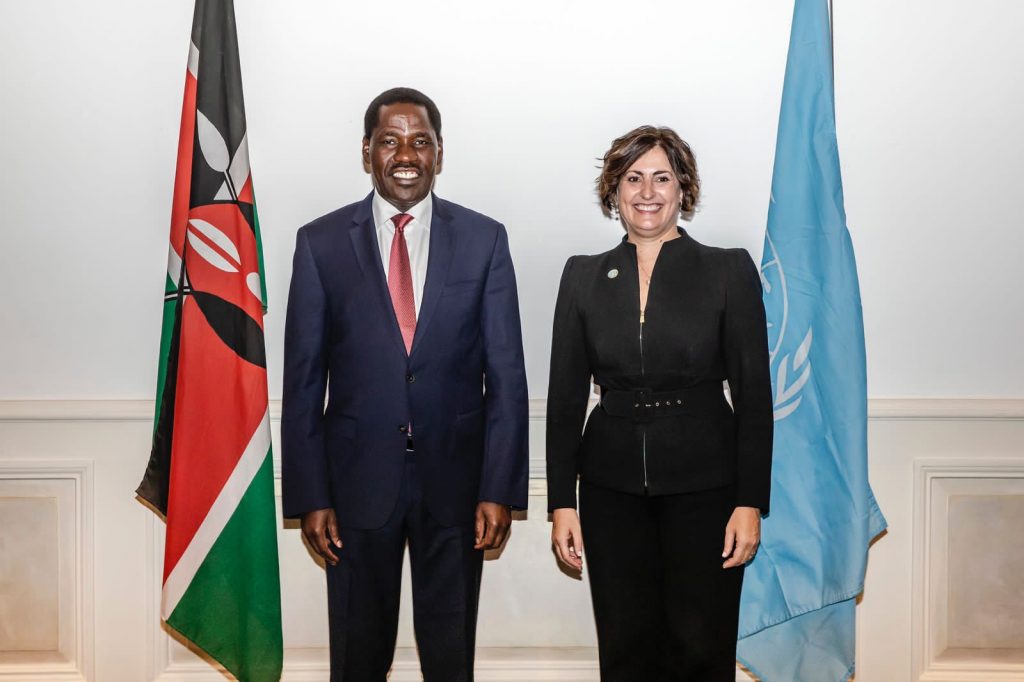
On her part, FAO Deputy Director-General Ms Beth Bechdol said that climate change is here with us, and it manifests in many ways, including drought, which is among the most devastating of natural hazards – crippling food production, depleting pastures, disrupting markets, and, at its most extreme causing widespread human and animal deaths. She added that the increase in frequency and intensity of droughts in the Horn of Africa, where crop and livestock agriculture is the main economic activity, is worrying as this is a direct threat to food and nutrition security.
“We, therefore, cannot afford to sit by and watch the current bad situation get worse. Everyone must act – the Governments, development partners, private sector, the UN and its Agencies and other stakeholders,” she said
The Deputy Director-General added that migratory and invasive pests like Quelea birds, African armyworms, desert locusts, and invasive weeds like the water hyacinth pose severe food and nutritional security constraints in areas invaded and infested. The frequency of invasions and spread of these pests have increased in the recent past, trends exuberated by climate change.
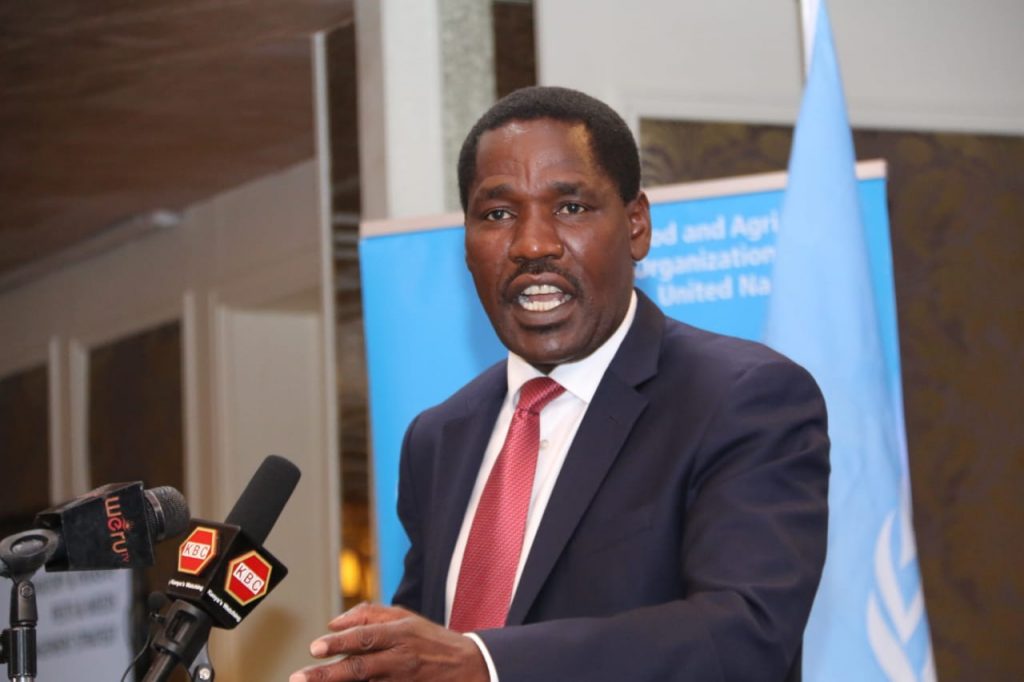
These pests and weeds characteristically move beyond political boundaries. As much as countries would wish to control these pests as soon as they are detected, their management is complex and requires a well-thought-out roadmap and must be handled through a transboundary approach with the neighbouring countries.
“This is where the Migratory and Invasive Pests and Weeds Management Strategy we are launching today comes in through its seven pillars, namely; capacity building, early warning, surveillance, control operation, and livelihood restoration. As FAO, we are delighted to have been part of the team that has contributed to the conceptualization and development of this strategy. We trust that implementation of this strategy by the national and county governments, which we commit to continue being part of, will steer the management of migratory and invasive pests and weeds and ensure livelihoods recovery, restoration, and resilience for affected communities,” she added.


